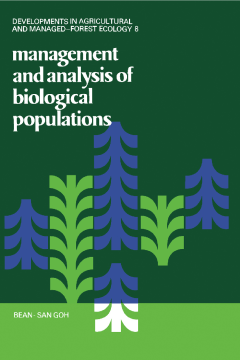
Additional Information
Book Details
Abstract
Management and Analysis of Biological Populations demonstrates the usefulness of optimal control theory in the management of biological populations and the Liapunov function in simulating an ecosystem model under large perturbations of its initial state and continual disturbances on its dynamics.
The first chapter of the book introduces the topic by presenting the different models in ecology and discussing the stability concepts, the ecological engineering, and various relevant functions in ecosystem modeling. The next chapter contains a brief survey of static optimization techniques and optimal control theory for systems, which are modeled by differential and difference equations. Another chapter covers methods that use Liapunov and Liapunov-like functions to establish that a given population model is stable relative to finite perturbations of its initial state and that it is non-vulnerable relative to large continual disturbances. The book also covers fisheries and logistic modeling, including a discussion of a few management problems. Moreover, this reference considers stability in an ecosystem model with complexities due to species richness, nonlinearities, time delays, and spatial heterogeneity. Finally, it explains how to manage pests and greenhouse crops.
The book is an excellent reference source for students and professionals in ecology and environmental engineering. Research professionals and extended workers in agriculture and agronomy will also find this book invaluable.
The book should be compulsory reading for everyone devoted to theoretical ecology and ecological modelling. A more clear presentation of these difficult topics will be difficult to find.
Biological Populations
The book's examples are easily understood and the diligent student should be able to recreate many of the solutions.
Biometrics
There is much to be gained from the text even without the mathematical detail...I recommend this book to those who dare tread on the frontiers of ecological research. It will also be thought-provoking for those policy-makers striving to place resource management on a truly renewable basis.
Transactions of the American Fisheries Society
